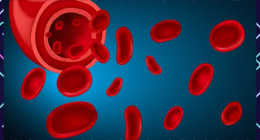Today, most regions across the world need to purify water before use. Here, we list some innovative water purifying technologies that you can use. Manufacturers across the globe are busy finding innovative water purifying technologies in order to cater to the need of their customers for potable water. There are five such technologies of which some are already incorporated in products available in the market whereas some are still in the offing. It may take some time before they hit the market, but they certainly have a future.
The water purifying technologies we talk about are
- Photocatalytic water purification
- Nanotechnology
- Acoustic nanotubes
- Aquaporin Inside™ technology &
- Automatic variable filtration
We will deal with each of these technologies in brief.
Photocatalytic Water Purification Technology
This technology is quite common nowadays in water purifiers due to its efficiency in removing contaminants from water.
It effectively removes from water a wide range of organic and inorganic substances, pesticides, crude oil, dyes having diverse chemical structures, and microorganisms. It can even treat industrial wastewater that is laden with metals along with high levels of organic materials.
This technology makes use of photocatalyst and UV rays for the purpose. It was Panasonic that pioneered the use of photocatalyst for water treatment. It made use of titanium dioxide as a photocatalyst and zeolite as both an adsorbent and a catalyst. Titanium dioxide helps turn organic contaminants into minerals or inorganic substance, thereby neutralizing their harmful properties.
The UV rays, on the other hand, uses radiation for getting rid of bacteria and viruses. The advantage of this system is that after treating the water, the photocatalysts used for the purpose can be reused.
Also read: Suffering From Constipation? Try This Yoga Asana For Instant Relief
Nanotechnology
Simply put, nanotechnology is a technology that works at the nanoscale or atomic or molecular scale. When the term is applied to water purifying technology, you are given to understand that it employs different modules for softening and removing many types of contaminants from water.
For that matter, even the conventional systems do the same. But what underscore the difference between the two are the basic technologies that are used and their respective efficiency. In these respects, the nanotechnology is certainly way ahead of the conventional methods. It is also more cost-effective. That’s added advantage.
The nanotechnology uses different media for filtration including nanoparticles, nanophotocatalysts, nanomembranes and nanoadsorbents. We shall talk about the nanoparticles first.
The advantage of using them is that no matter how low is the level of contamination in the water, their greater surface to volume ratio enables them to eliminate the contamination through a process called adsorption. They are equally effective in removing both organic and inorganic pollutants.
One good example of nanomaterial is carbon nanotubes which have proven efficacy in taking out organic, inorganic and even biological compounds like bacteria and viruses from water. This technology comes as a membrane with pores which are far smaller than the membranes that are used in conventional systems.
Interestingly, though the pores of nanotube membranes are extremely small, they don’t check the flow of water but rather makes for a faster flow rate due to the smoother interior of the nanotubes.
Also read: In-silico prediction of effective drug combinations for the treatment of SARS-CoV-2 infection
Other important example of nanomaterial is nanofibrous alumina. It is quite effective in eliminating negatively charged contaminants like bacteria and viruses, and organic and inorganic impurities that are suspended in water.
The companies that are known to have made the most of this technology include Alfa Laval, GEA Group, Koch Membrane Systems, Itn Nanovation, NanoOasis, DowDuPont, etc.
Acoustic Nanotube Technology
It was originated with Johnson Space Center of NASA. As the name suggests, it makes use of acoustics instead of pressure in order to drive water through carbon nanotubes. The very idea of putting together molecular screen and carbon nanotubes and driving water through this filtration system with the help of acoustics is quite unique.
Moreover, it is absolutely energy efficient when compared to the traditional filtration systems. But, the advantage does not stop there! It also dispenses with the bother of cleaning the system that is used for filtration.
The usage of this technology is better suited for treating water on a larger scale, in utilities such as desalination plants, industries, wastewater treatment, hospitals, municipal water plants, etc. The good thing is that it comes as something that is customizable as per the needs of the users. When we say ‘customizable’, it means addition of several filters.
Finally, since this is a patented technology of NASA, any manufacturing company that wants to use it in their product must have license from the same.
Aquaporin Inside™ Technology
This technology derives its name from the company that developed it. It employs the purification technique that draws upon biochemical processes and uses what is called the bio-mimetic membranes for the purpose. If that sounds unfamiliar to you, reverse osmosis (RO) certainly won’t. RO is the popular name for the process that is used in it.
Riya Menon, a technical writer/reviewer at Energy Conversion Devices, explains it in the following terms:
“Reverse osmosis is a water purification technology that uses pressure to pass source water through a semi-permeable membrane with pores small enough to pass pure water through but rejecting dissolved salts (ions) and impurities like bacteria and virus.”
To make it clearer technically, the flow of water through the membrane is regulated through hydrostatic and osmotic pressure. It means the flow of water is regulated by the pressure that is generated through the quantity of water on one side of the membrane and the solution having certain concentration of solute on the other.
Riya also points out what gives RO systems an edge over those systems that use UV rays for purification. She says that the latter can fairly tackle bacteria and viruses through UV rays but are utterly ineffective in addressing the issue with water polluted by dissolved salts (TDS). It is exactly here that the RO systems excel.
The systems featuring this technology are widely used for obtaining clean and healthy drinking water both in domestic and industrial settings world over. But, the distinction of the Aquaporin Inside™ lies in the fact that it is the only company that uses aquaporins for filtration. The membranes made from these are good for both forward osmosis (FO) and reverse osmosis (RO).
The company, in association with a Danish Aerospace Company, has established the Aquaporin Space Alliance, an organization that is responsible for promoting the use of this patented technology on commercial level to be used for a remarkably wide range of applications in the space by European and the US ventures in their space programs.
Automatic Variable Filtration (AVF) Technology
It works through a stream of water flowing into the twin AVF units provided with descending bed filters, and thence the filtered water flows upward and, then, out of the AVF unit. The dirty water passes through Air Lift and is eliminated from the system.
The difference between this two-stage AVF filtration system and conventional systems using membranes is that the former doesn’t need replacement but is rather cleaned continuously through a scouring process that is helped by filtered media. What’s more, the dual media filters can work in serial or in parallel mode.
One may ask how pure the filtrate could be when compared with the end-results of systems using membranes. Interestingly, the AVF filtration is totally on par with the efficiency that we may expect from micro-filtration technology. Also, it is a lot more cost-effective in terms of operation and maintenance than any other technology we know about so far.
Finally, this technology is designed for processing larger quantities of water and, hence, is ideal for municipal drinking water and wastewater treatment. It can also support systems using membranes for filtration; because the latter are prone to getting blocked over a period of time. It also has utility in desalination processes.
The companies that provide this technology include R2O Water Technologies, Eureka Forbes and Process Research ORTECH.
Having considered these state-of-the-art water purification technologies, one may ask about which one is better. According to EnergyConversionDevices.com, the reverse osmosis (RO) water purifying technology remains the best of the lot in case the TDS level is high in the water. Otherwise, the UV/UF water purifiers will do.
These are the technologies that are already available to the customers. They may have better options to choose from in the time to come. But, till then, they will have to rely on what is already there.
This post first appeared on The Health Site






